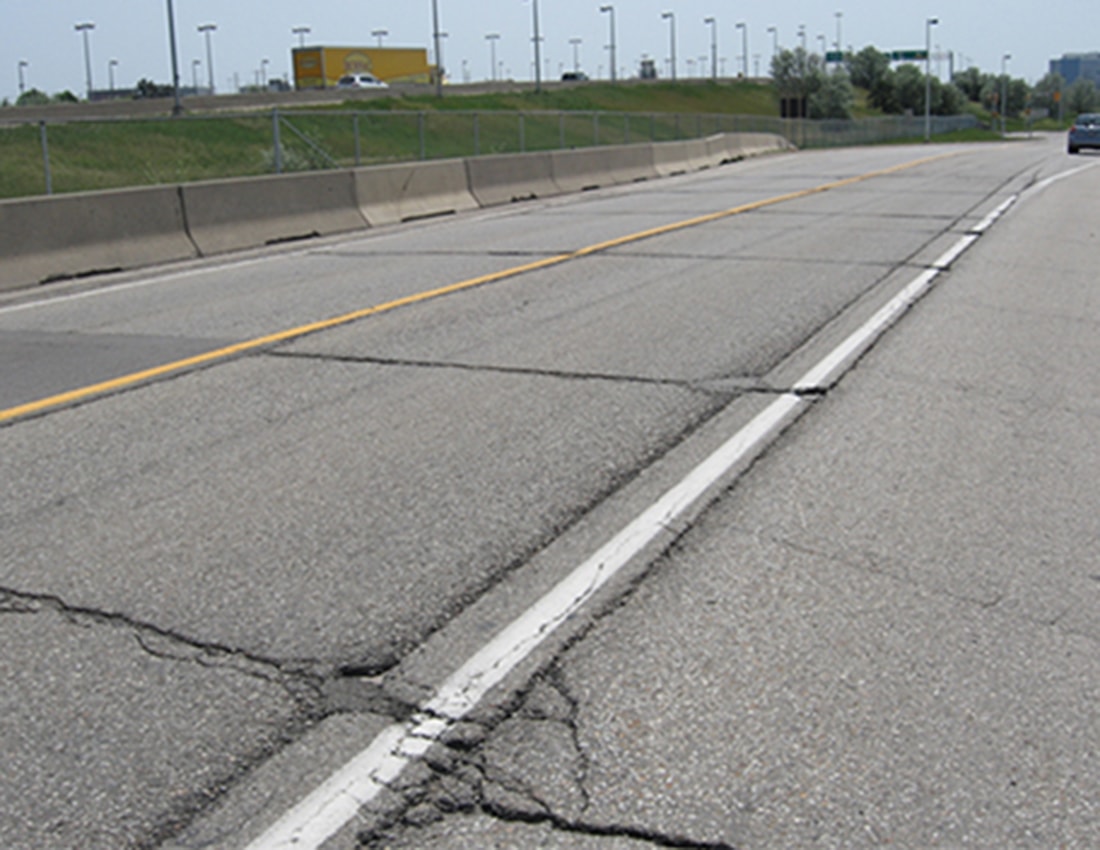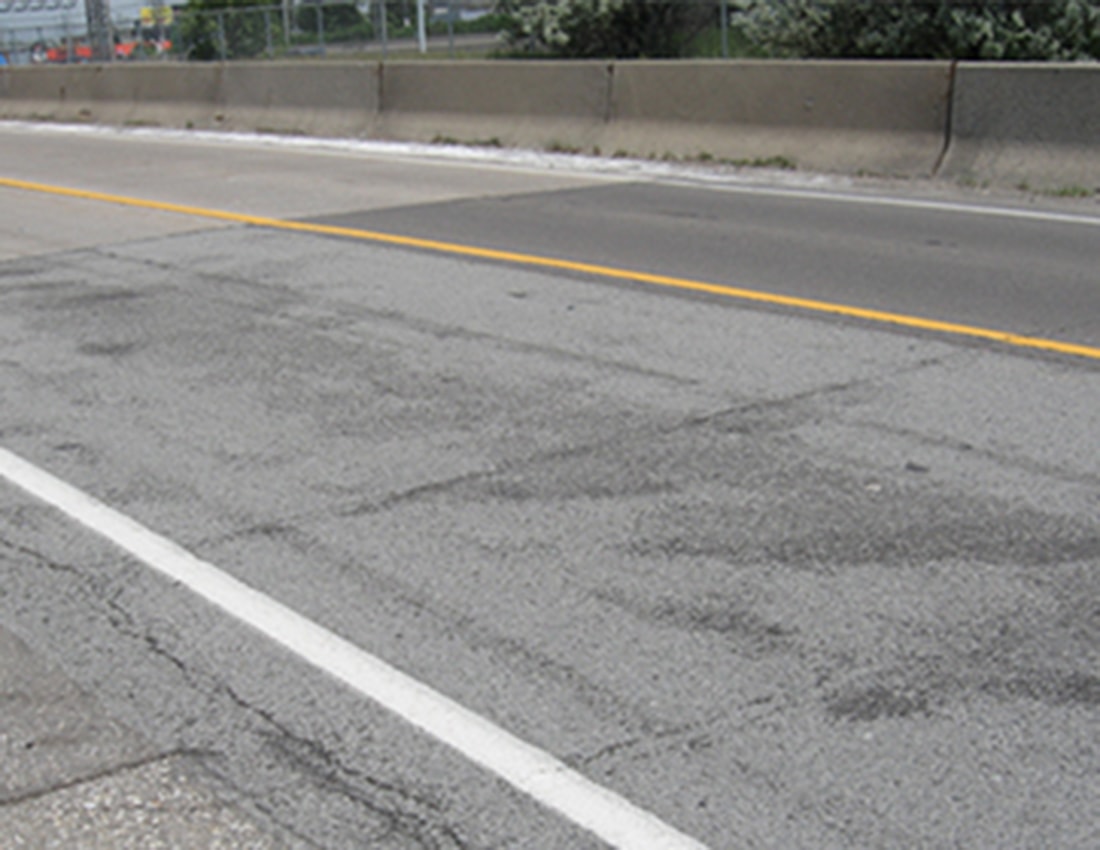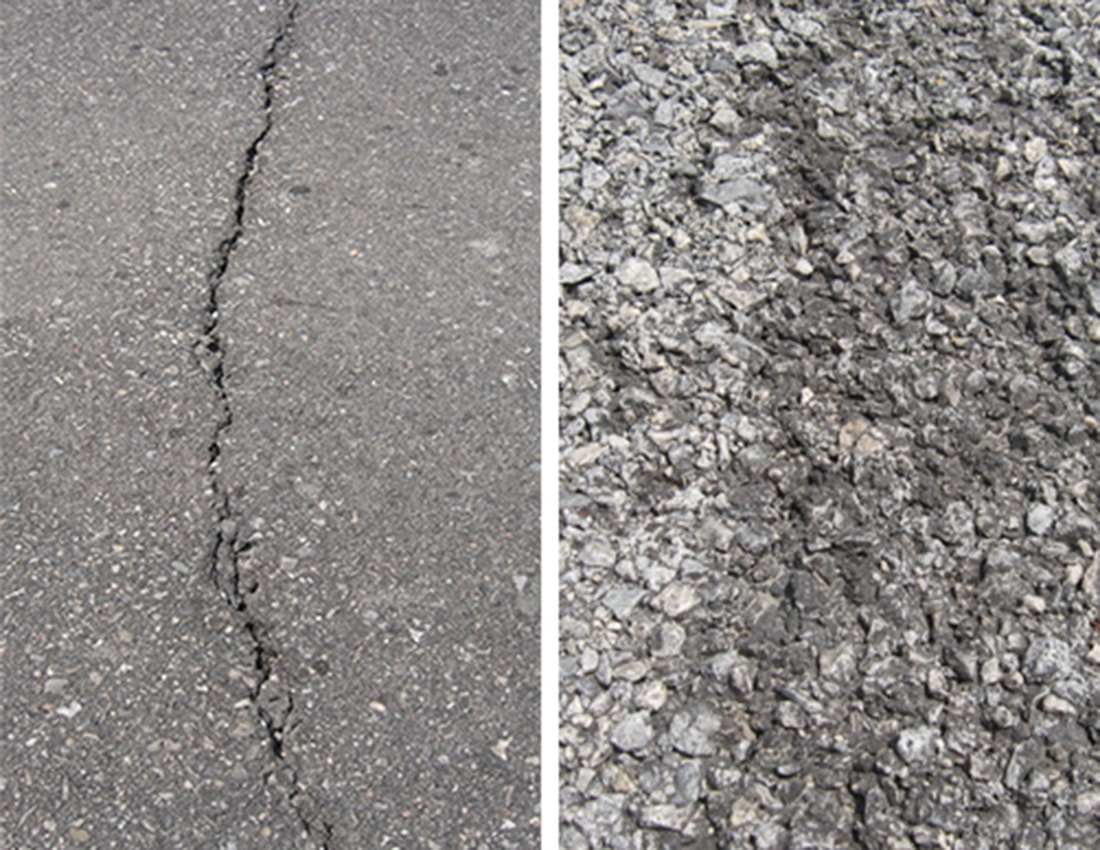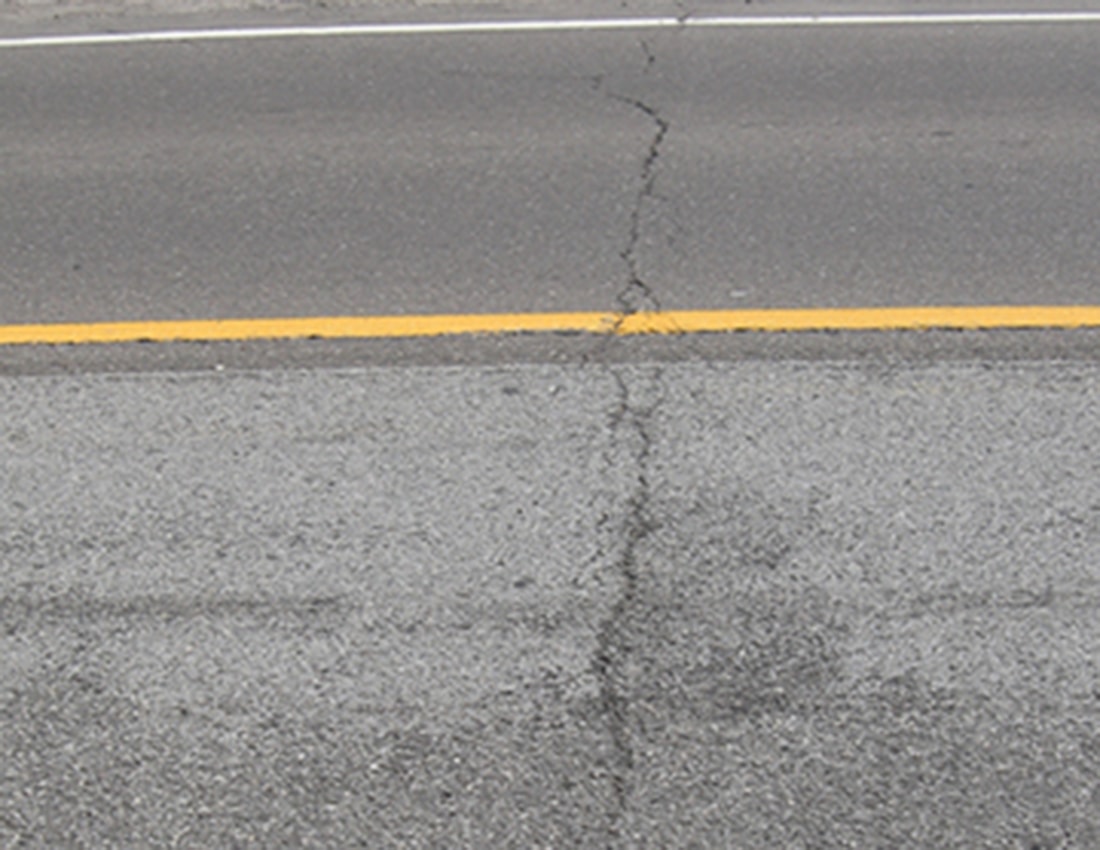Toronto Pearson International Airport – EZ Street Paving
Toronto Pearson International Airport – EZ Street Paving

Existing Pavement Conditions

EZ Street surface (near side) Asphalt surface (far side)
EZ Street / Asphalt Comparison Project Brief
In April 2010, a small surface comparison project was performed to compare the performance of regular asphalt to EZ Street Asphalt over a section of concrete slab roadway.
Silver Dart Drive in the City of Mississauga was selected for this test comparison. Silver Dart Drive is a service Road around the southern end of Toronto Pearson International Airport. This road has a reasonably high traffic volume and a high proportion of heavy vehicles (being a service entrance for the airport). The pavement on this road is constructed of concrete slabs with about a 25mm asphalt surface. The concrete slabs have a significant expansion joints and slab movement creating severe cracking in the asphalt surface. The current road / pavement condition would be considered very poor with severe deterioration to the asphalt surface at every joint.
For the trial, the existing surface was removed over a length of about 20 to 30 m and replaced with new material. One lane was replaced with a traditional asphalt surface and the opposite lane was replaced with EZ Street Asphalt.
Pavement Testing
Marshall strength / stability tests were performed on the EZ Street material with results of 19,800 N being achieved. The standard Marshall results for regular asphalt is around 6,000 to 8,000 N.

Above Left: Cracks in the asphalt (full depth crack). Above Right: Self healed crack in the EZ Street (visible scribe mark only).

Expansion Joint Cracks through the pavement.
Project Update
In June 2012, (two years after installation) Silver Dart Drive was revisited to review the conditions of the two surfaces and to review any deterioration that may have occurred.
As can be expected with the concrete slab road base and inbuilt movement, both surfaces show signs that joint movement has occurred. The traditional asphalt has cracks across all of the joints with some additional (new) cracking visible in the surface. The cracks were inspected close up (as per photo) and the cracks were found to penetrate all the way through the surface into the base. To keep this section of the pavement water proof, crack sealing will have to be performed through the length of the pavement life. This will be an ongoing maintenance issue for regular asphalt through the life of this pavement.
EZ Street also shows some signs of cracking across the joints / expansion joints. Unlike the regular asphalt, when examined up close, the cracks show to be lines on the surface of the layer with no penetration through the mat. It visibly looks more like a scribe mark on the surface than a crack at all. Any cracks that had appeared in the pavement seem to have self-healed.
EZ Street vs Asphalt
There are a number of reasons why the EZ Street is performing better than the regular asphalt for Silver Dart Road that will be the same for any surface with this pavement structure situation.
The EZ Street mat will remain slightly flexible and will absorb some of the movement in the concrete slabs and the pavement structure. This will reduce the amount of cracking that will appear in the surface. Regular asphalt turns very rigid when it has been installed and it goes cold. Once the pavement is rigid, it is extremely susceptible to any pavement movement and is prone to breaking resulting in the inevitable cracks appearing in the surface.
EZ Street has ‘self-healing’ properties. The product itself will remain “live” for a significant period of time. It will not move, deform or rut but will enable the material to reform to heal any cracks that appear. If cracks do appear due to higher than normal pavement movement such as the concrete slab joints in this trial then the cracks are able to re-join or heal leaving only a slightly visible mark on the surface but no crack at all. Asphalt on the other hand has an active life of about three hours from the asphalt plant and once it has gone cold and set it becomes very rigid. This rigid pavement becomes very susceptible to any movement from the pavement structure and will literally snap and break if the movement is too great. Once the asphalt mat has broken / cracked it can’t be repaired. It will always be a weak point in the surface and will inevitable be a maintenance issue for the whole of the pavement life.
As EZ Street Asphalt is a cold material it will eliminate any paver joints / cold joints within the paved surface. As the EZ Street is installed, the paver joints will merge together to create on single mat the full width of the road. Paver joints / cold joints are an inbuilt structural weakness constructed into the pavement. Baring any pavement weaknesses, the paver joint is the first area of the surface to start deteriorating and an area where failures will occur. Eliminating this joint will eliminate a weakness in the pavement.
The three points listed above provide for significant “whole of life savings” for the pavement and the surface. Not only will EZ Street potentially provide a surface that will greatly outlast traditional asphalt but it will also reduce maintenance costs through the life of the surface. The elimination of cracks and joint deterioration will reduce the amount of maintenance work that will be required.